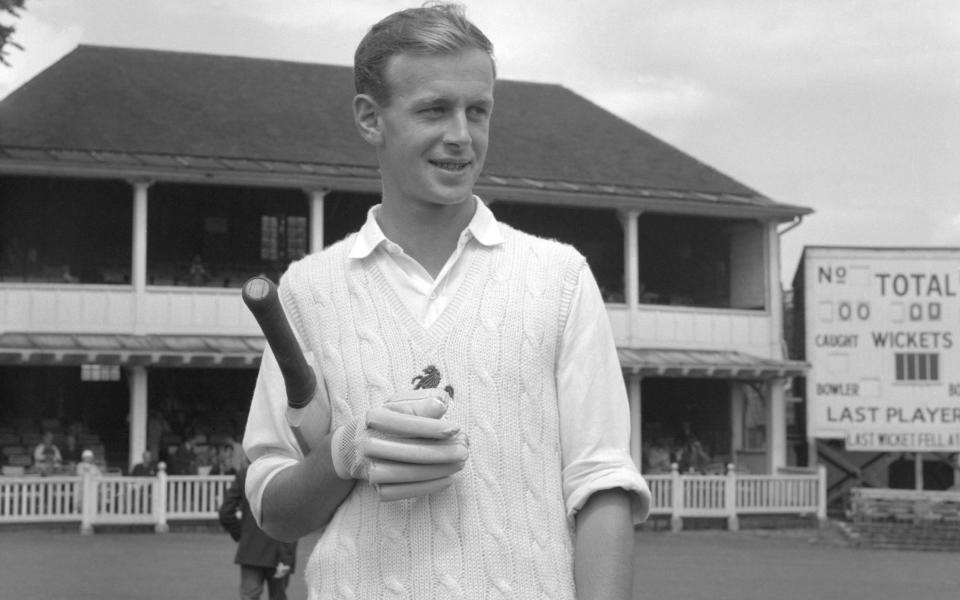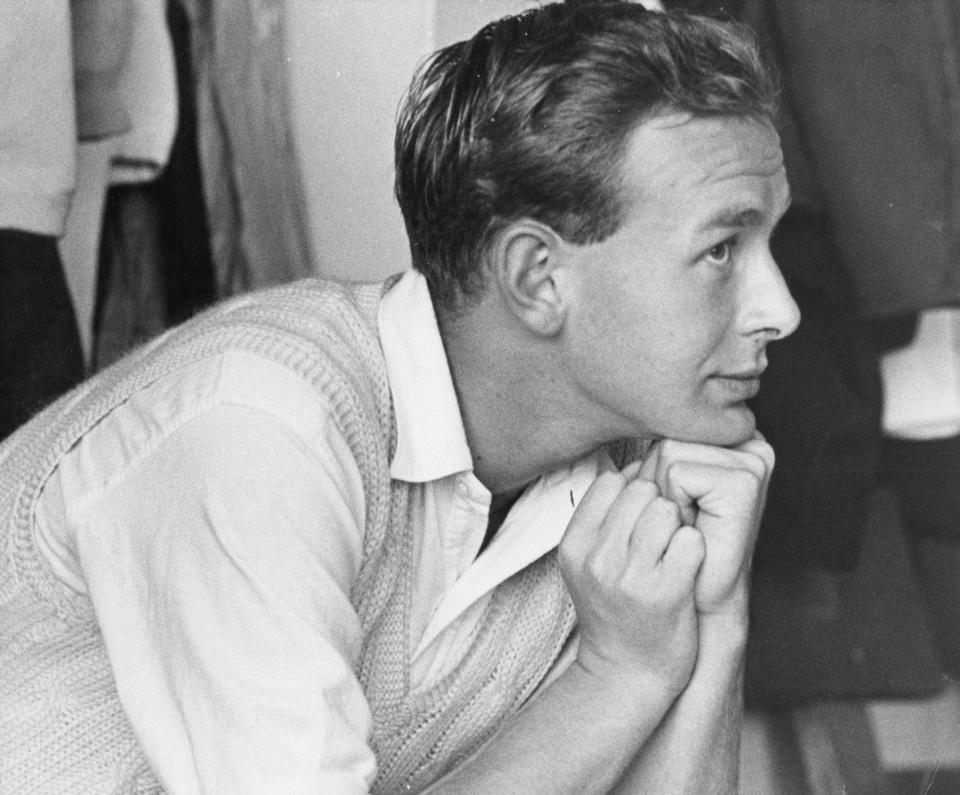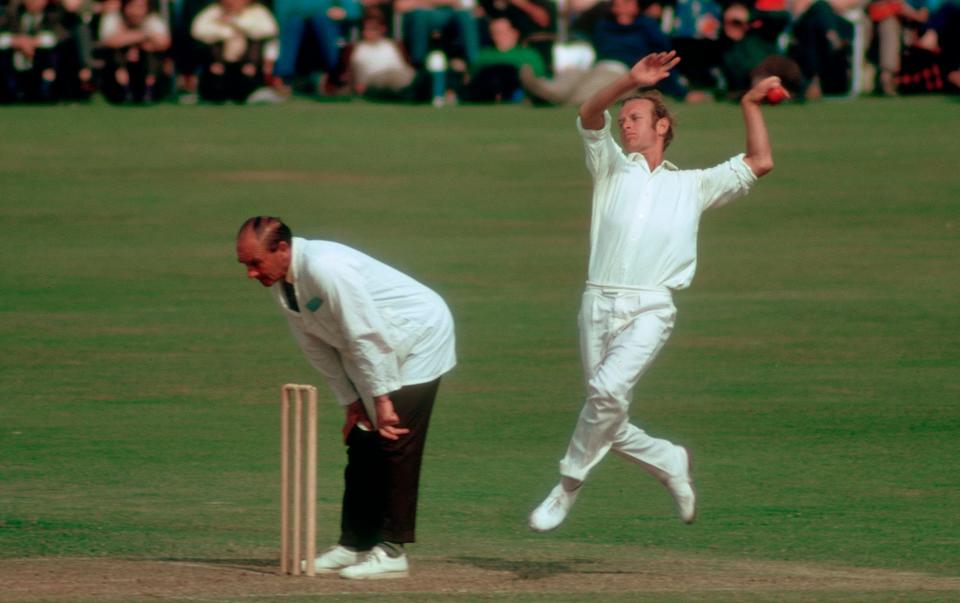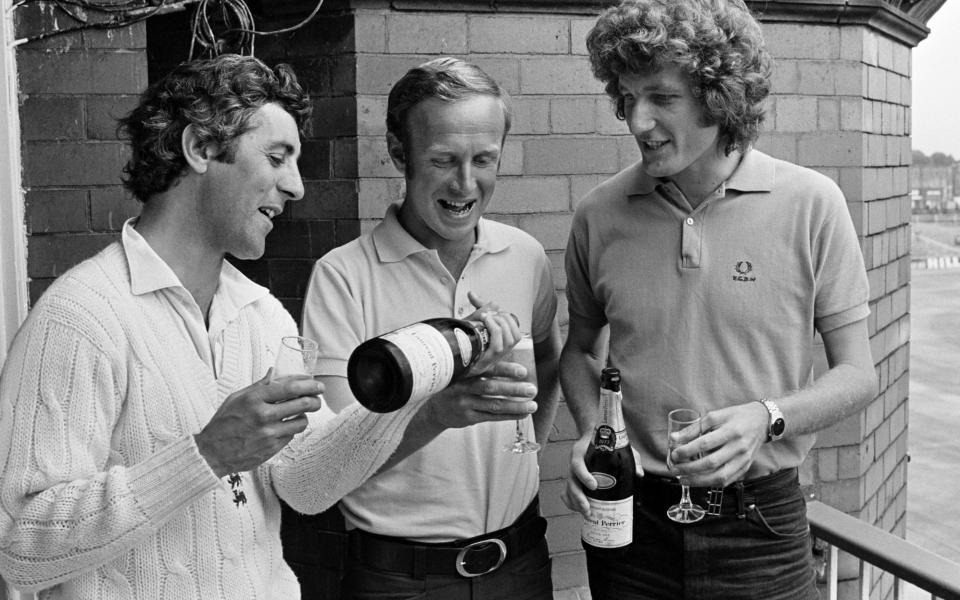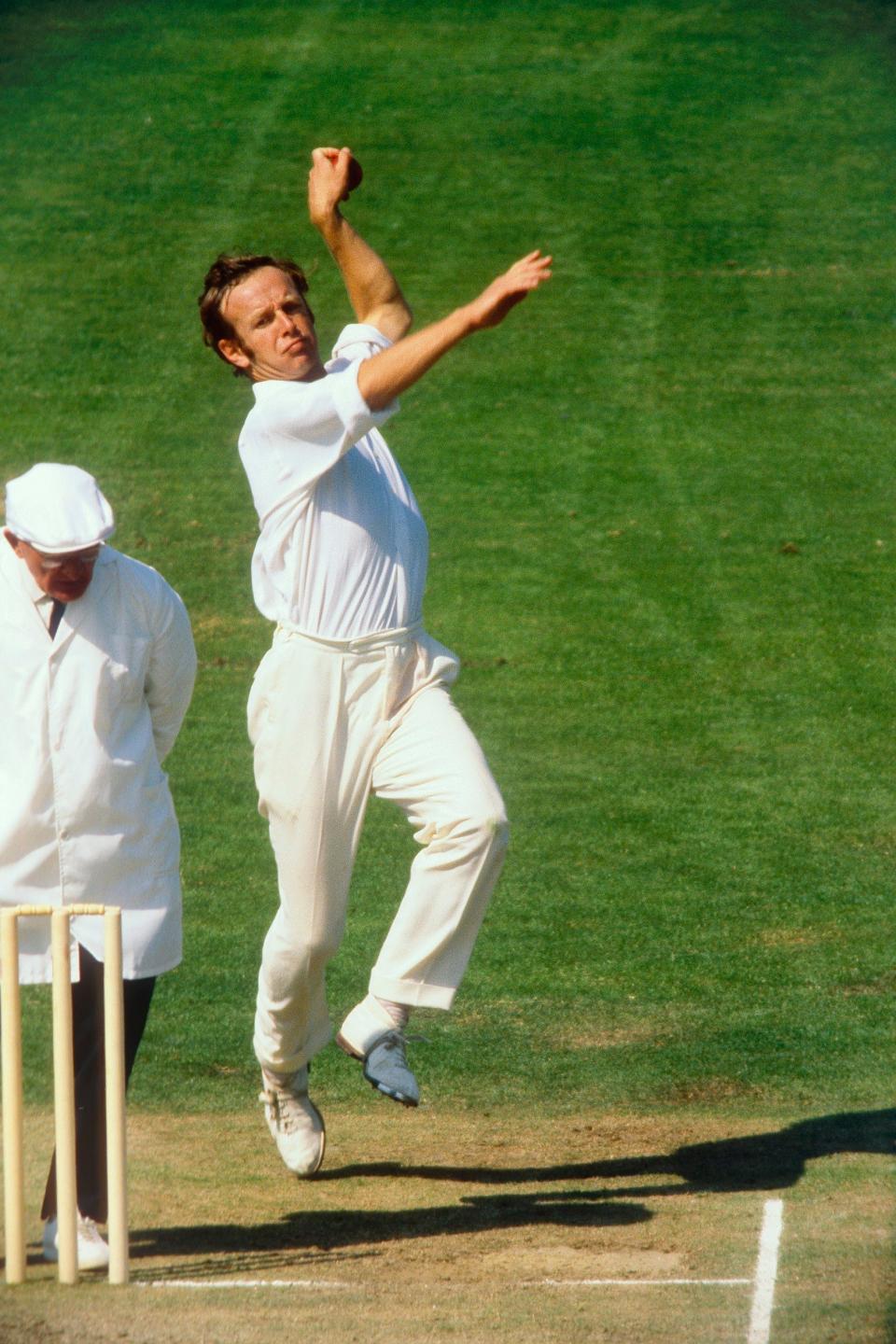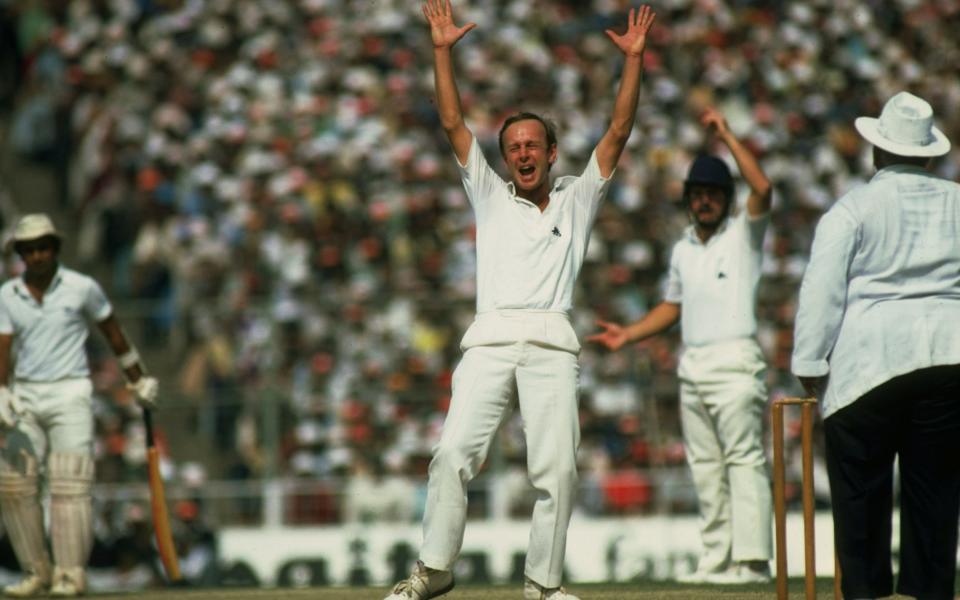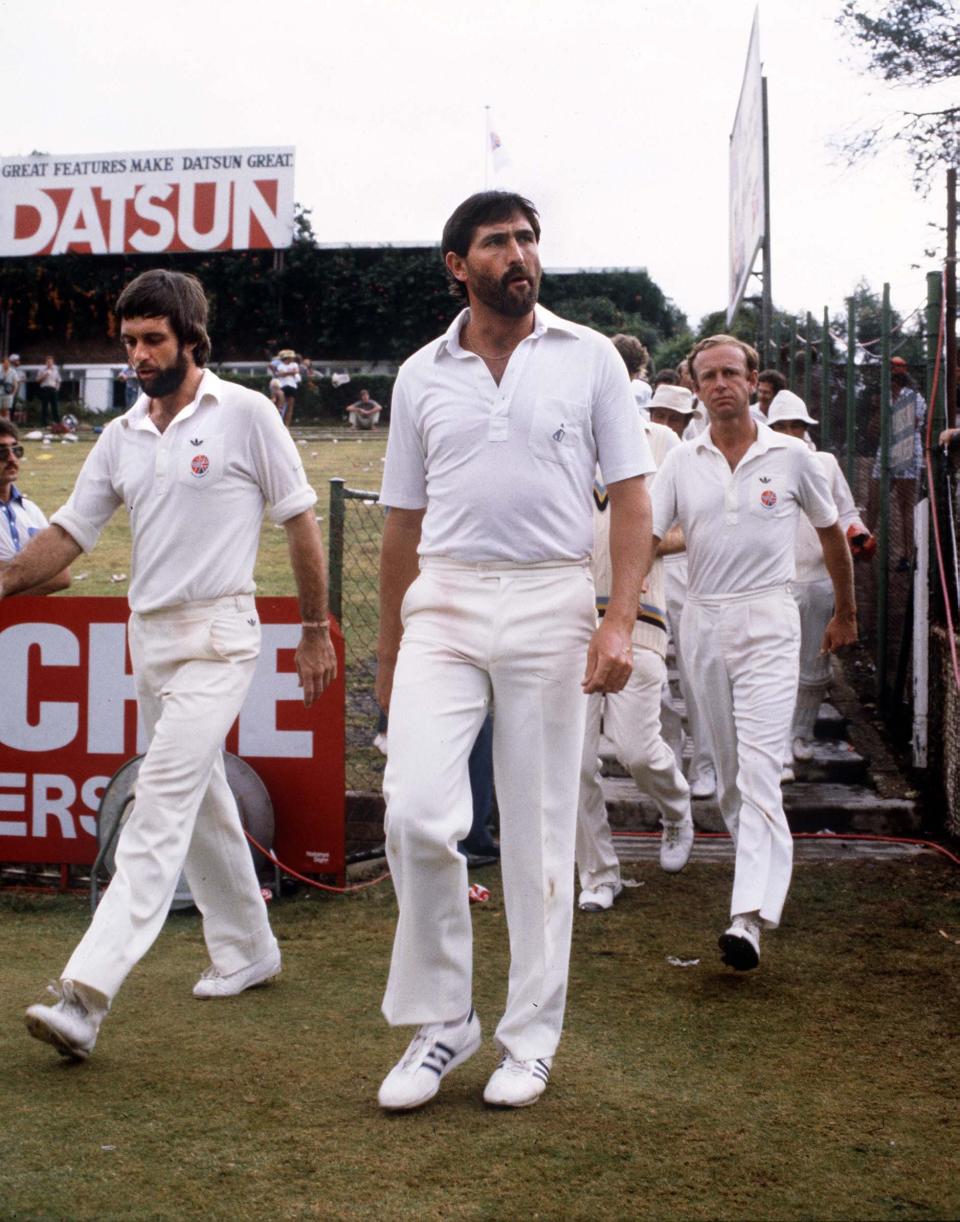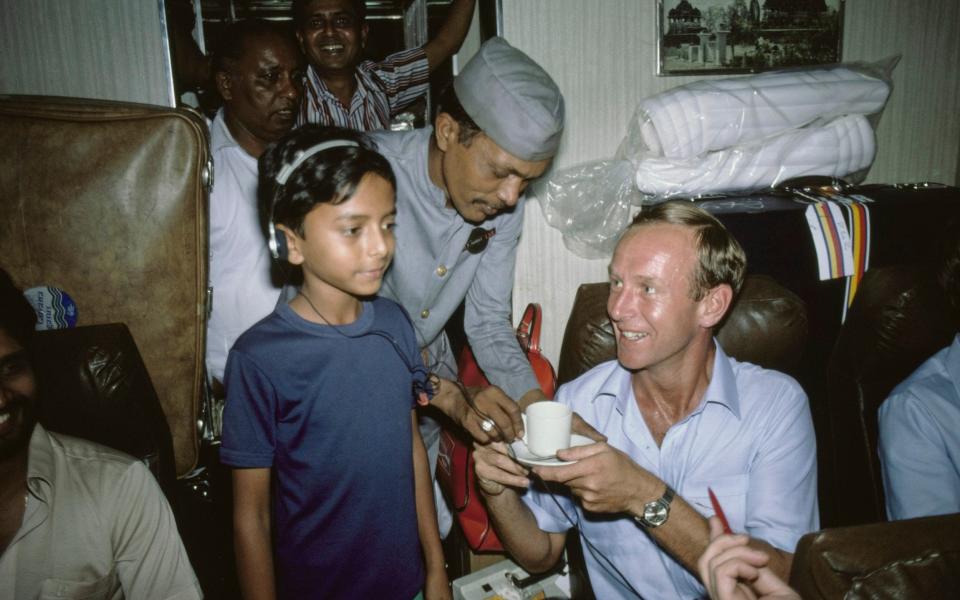Derek Underwood, the Kent and England cricketer, who has died aged 78, took 297 wickets in his 86 Tests, more than any other English spinner.
His special skill was his ability to bowl left-arm spin at near-medium pace. This could make him virtually unplayable on damp or drying wickets. England, it was said, “would carry Underwood like an umbrella in case of rain”. He was all the more effective because, besides turning the ball in orthodox fashion from leg to off, he was master of the inswinging arm ball that would hurry on to the batsman from outside the off-stump.
So Underwood’s nickname “Deadly” was well earned. When the wicket was not taking spin, however, he could seem less remarkable, although his unerring accuracy and subtle variations of pace meant that he was rarely collared. His Test wickets cost him 25.83 apiece.
“He was a mean bowler,” recalled Geoffrey Boycott. “If one of his teammates was kipping in the field, letting the batsman sneak a single and escape, he would glare at you.”
Underwood was sometimes criticised for not giving the ball enough air. He hated, however, to be hit back over his head, and never showed any enthusiasm for buying wickets dearly.
Bowling, he once said, “is a low-mentality profession: plug away, line and length, until there is a mistake.”
Though well turned out, Underwood never looked a natural athlete. He would walk back to his mark with a heavy, duck-like tread, feet pointing outwards.
His action, however, was fit for purpose. A brisk 10 paces would bring him to the wicket, where he would make full use of his body in delivery, obtaining maximum height of arm, and completing a full follow-through.
Moreover, Underwood was a thoroughly durable player who hardly missed a match. As such, he played a vital part in Kent’s County Championship victories in 1970, 1977 and 1978. In addition, the county came second in 1967 and 1968.
His Test record might have been even better if he had not disqualified himself from selection for more than two years by joining Kerry Packer’s World Series in 1977. Nor did he play Test cricket after making himself available for the rebel tour of South Africa in 1982.
Of Underwood’s many fine performances for England three in particular stand out. At the Oval in 1968, Australia, set 352 to win in their second innings, were swiftly reduced on the last morning to 86 for five as Underwood took three quick wickets, including those of Ian Chappell and Doug Walters.
At this point a freak storm flooded the ground, so that it seemed the game must be abandoned. Yet intense efforts by the groundsmen, aided by volunteers from the crowd, allowed play to resume at 4.45.
Australia survived until 5.24 without losing another wicket. But after Basil d’Oliveira had made a breakthrough, Underwood grabbed four victims in quick succession to end with seven wickets for 50 and bring England victory with five minutes to spare.
He maintained, though, that the pitch had not been as unplayable as the Australians made out. “The ball did not do that much,” he recalled. “It didn’t turn, was very slow, and just went through. The wicket itself was saturated.”
At Headingley in 1972 Underwood caught Australia on a far more difficult pitch, at once damp and grassless due to the ravages of a fungus called Fusarium oxysporum. He profited by taking four for 37 and six for 45, bringing England victory by nine wickets.
Against Pakistan at Lord’s in 1974 Underwood again proved irresistible. On this occasion the wicket was drying after rain had seeped under the covers during an overnight storm. His returns of five for 20 and eight for 51 were the best of his Test career, and included a spell of six wickets for two runs in 51 balls. It was perhaps only just that rain should have prevented play on the final day, allowing Pakistan to escape with a draw.
Derek Leslie Underwood was born at Bromley in Kent on June 8 1945. His father played cricket for Farnborough, and, determined that his children should excel him, set up a net in the garden, with a concrete pitch covered by matting. Derek, being a younger brother, was condemned to bowling.
At Dulwich prep school and Beckenham and Penge Grammar School, he was soon producing sensational analyses. At first he bowled as fast as he could, but soon reduced his pace in the cause of accuracy.
In 1961 Underwood took all 10 wickets against Bromley Grammar School. When he turned out for Farnborough, he repeated the feat against Bromley Town – at the cost of only 16 runs. For the South of England Boys against the Midlands he returned an analysis of four for six.
At Alldays store in Croydon the boy received coaching from the Surrey players Ken Barrington, John Edrich and the celebrated left-arm spinner Tony Lock. Underwood liked to say that Lock recommended him to Kent for his batting.
To Kent, in any case, he went, and in his first game for the county’s second XI, against Hampshire seconds in 1962, took five for 45 and four for 15.
In May 1963, still only 17, Underwood made his debut for the full county team, against Yorkshire at the Circle, Hull. He claimed five wickets, and by the end of the season he had 101 victims to his name, the youngest bowler to pass the century mark in a season of first-class cricket.
Underwood, though, was not awarded his county cap until August 1964, when Kent were playing the Australians. In the previous month he had bowled the county to victory against Sussex at Hastings with figures of nine for 28 in Sussex’s second innings. That season he again took 101 wickets, if rather more expensively than in 1963.
In 1965 Underwood did less well, claiming only 89 wickets. The next year, at the insistence of Colin Cowdrey, his county captain, he bowled over rather than round the wicket and, with 157 victims, enjoyed the best season of his career.
He still preferred, though, to bowl round the wicket, and convinced himself that his success in 1966 was due chiefly to the 65-over limit which had been imposed on the first innings of county games, forcing batsmen to be more aggressive.
Underwood made his Test debut in June 1966, against West Indies at Trent Bridge. Bowling to Rohan Kanhai and Garry Sobers proved a great deal more challenging than the county game, and after two matches, in which he took one for 172, he was dropped.
That July, however, at Westcliff-on-Sea, he returned an analysis of nine for 37 to bowl Kent to victory against Essex on what he described as the worst wicket he ever encountered.
Conditions were very different in Pakistan, which he toured with the England Under-25s early in 1967, and where he proved notably less effective than his fellow spinners, Pat Poco*ck of Surrey and Robin Hobbs of Essex.
That summer in England, by contrast, Underwood captured 136 wickets at only 12.39 apiece. Recalled to the Test side at Trent Bridge in August, he swept aside Pakistan with five victims in their second innings.
Even so, he was not selected for the tour of the West Indies early in 1968. That summer, though, saw his triumph at the Oval, as he ensured that England squared the Ashes series. Equally, in 1969, he put paid to New Zealand with a second-innings analysis of seven for 32 at Lord’s.
There had been doubts that Underwood would be effective on hard Australian wickets. In 1970-71, though, he proved invaluable in keeping one end quiet while John Snow did the damage at the other. In fact he took 16 wickets on his own account. And it was Underwood who grabbed the last wicket in the final Test to ensure that England regained the Ashes.
Two weeks later, at Christchurch, he sent New Zealand tumbling to defeat with analyses of six for 12 and six for 85, claiming his 1,000th first-class wicket in the process.
Still under 25, he was the third youngest player to achieve this feat, after George Lohmann and Wilfred Rhodes, who had both begun their careers in the 19th century.
Yet from 1971 to 1973 the Test selectors were inclined to prefer Norman Gifford, the Worcestershire left-arm spinner. Indeed, it was only because Gifford was injured that Underwood was able to destroy Australia at Headingley in 1972.
In truth, Ray Illingworth and Tony Lewis, England captains during this period, felt that there was little to choose between the two bowlers. From 1973, though, Underwood decisively established himself as first choice.
Even so, Test wickets generally came expensively for him in the mid-1970s with the exception of a successful series in India in 1976-77, when he took 29 wickets, including nine in the last Test at Bombay.
In 1977 Underwood elected to join Kerry Packer’s World Cricket Series, a decision he never regretted. “As a Test player, you were offered nothing,” he recalled. “There was no security, we were only offered contracts for six months from April to September.”
Underwood did not meet with much success after his return to Test cricket in December 1979, on another England tour of Australia. Only in his very last Test, against Sri Lanka in February 1982, did he again strike gold, when he bowled England to victory with analyses of five for 28 and three for 67.
In 1983 Underwood was still good enough to take 106 wickets in first-class cricket, the 10th and last time he passed the three-figure mark in an English season. He retired in 1987.
In 676 first-class matches spread over 25 years Underwood had sent down 139,698 deliveries, bowled 8,956 maiden overs and taken 2,465 wickets at 20.28 apiece.
On average he conceded 2.14 per over in the first-class game, while the stranglehold he could impose in the one-day game played an important part in Kent’s Gillette Cup victories in 1967 and 1974.
Underwood the batsman might occasionally flicker into life. Generally, though, his courage was more evident than his ability: in his first Test he was struck in the face by a bouncer from Charlie Griffith.
“I can see them coming,” he once said of bumpers, “but I am not good enough to get out of the way... I automatically get in line, body behind the bat and ball. But no one ever told me what to do next.”
Nevertheless, after Underwood hit 45 not out in 53 minutes against the Australians at Headingley in 1968, he found himself used as a night-watchman, and only once lost his wicket before the close of play.
For some time, however, he held the England record for the number of ducks in Test cricket, though his total of 19 has since been surpassed by Michael Atherton, Monty Panesar, Steve Harmison, Jimmy Anderson and Stuart Broad. Altogether Underwood scored 937 runs in Tests, at an average of 11.56.
He also experienced two moments of batting glory for Kent. Sent in as nightwatchman against Lancashire at Old Trafford in 1969, he went on to hit 80 the next day. And in 1984, at Hastings, again a nightwatchman, he scored his only century, 111 out of 243, in Kent’s second innings against Sussex. The match was tied. In his first-class career he notched up 5,165 runs at an average of 10.12.
Subsequently Underwood became sales director of a company which specialised in the manufacture and installation of artificial cricket pitches. He remained eager to play, whether in the Bradford League or in charity matches. Highly intelligent, he became a popular speaker at cricket functions. Outside the game, he read avidly, played golf, collected stamps and listened to music.
Underwood was appointed MBE in 1981. In 2006 he was named president of Kent CCC, and then in 2008-09 succeeded Michael Brearley as president of MCC. In 2011 a stand at Canterbury was named after Derek Underwood and Alan Knott. He also served as chairman of the Stars Foundation for Cerebral Palsy.
Derek Underwood married Dawn in 1973; they had two daughters.
Derek Underwood, born June 8 1945, death announced April 15 2024
